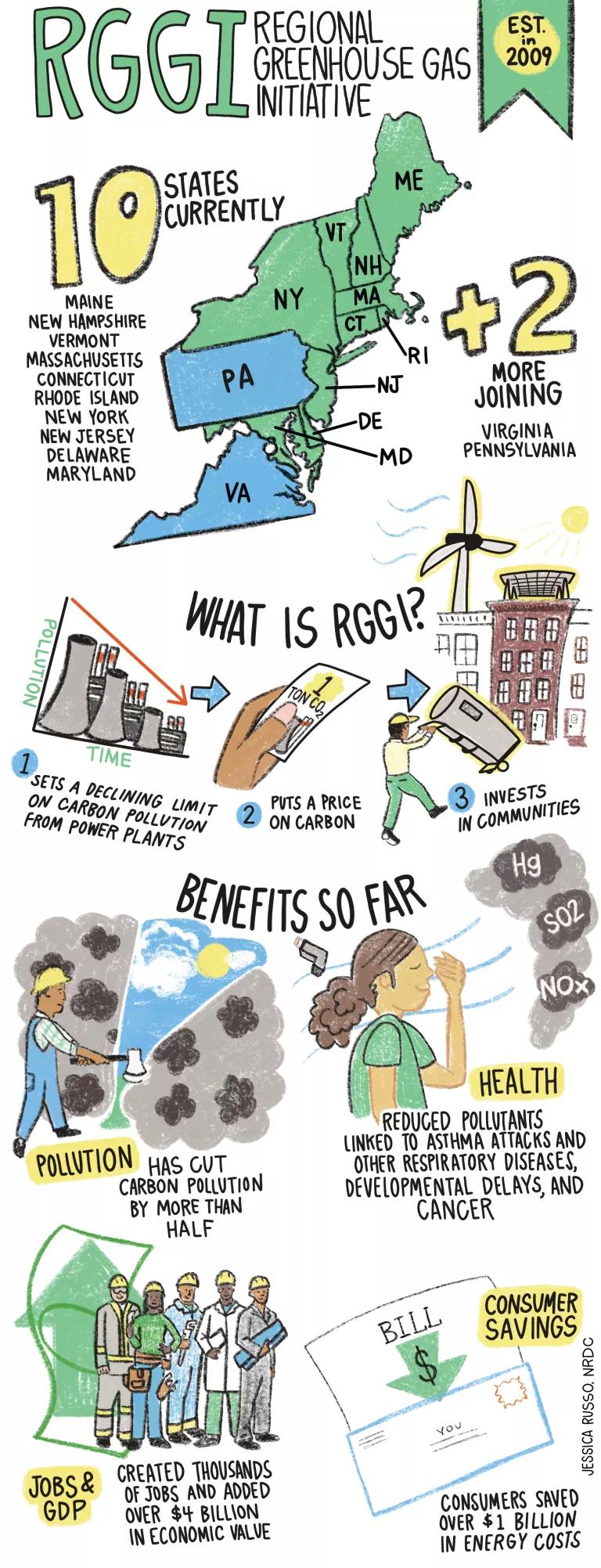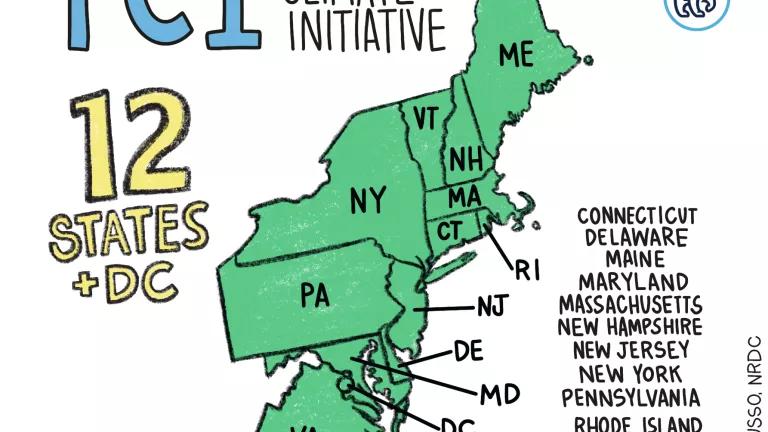Eastern States Continue to Step Up on Climate

Photo: Lindsay Henwood on Unsplash
Part of NRDC's Year-End Series Reviewing 2019 Energy & Climate Developments
As the Trump administration attempts to derail climate action, a dozen states in the East and others are refusing to give in. Their leadership was critical in 2019 and will continue to be needed in 2020.
The dozen eastern states, together with the city of Washington, D.C., deserve recognition for taking important steps to address the Number One source of climate pollution—the transportation sector—while continuing to strengthen their efforts to address the second-largest source—power plants.
Individual eastern states took bold steps this year, including New York's adoption of the nation's strongest climate law. In this blog post, however, I cover the important work the states are doing together, as part of two regional programs known as the Regional Greenhouse Gas Initiative (RGGI) and the Transportation and Climate Initiative (TCI). The states participating in these programs are Connecticut, Delaware, Maine, Maryland, Massachusetts, New Hampshire, New Jersey, New York, Pennsylvania, Rhode Island, Vermont, and Virginia. Washington, D.C. is also a member of TCI.
RGGI Expands, Continues to Clean up the Power Sector
The Regional Greenhouse Gas Initiative is an innovative, market-based program that’s been cutting carbon pollution from power plants for over a decade. As I discussed in a recent post and as illustrated by my colleague Jessica Russo below, RGGI’s successes are numerous.

But the RGGI states aren’t resting on their laurels. In 2019, they made significant progress as new states committed to join or link with RGGI’s regional carbon market and grow the program. Expanding RGGI’s footprint will increase its impact, as pollution cuts from power plants will be required over a larger geographic area and will provide additional co-benefits in the newly participating states as well, including improved health, new jobs and economic growth, and consumer bill savings.
Under new state rules, New Jersey will ring in the New Year by becoming RGGI’s tenth state (we've listed them as already in RGGI above since it's only a matter of weeks), and in just over a year, Virginia will become its eleventh. Recently, Pennsylvania's governor also directed his state environmental agency to start the process of joining RGGI, including by submitting a formal rule proposal by next summer, which would roughly double RGGI’s current carbon-cutting impact due to Pennsylvania’s large number of power plants. And with states like North Carolina poised to explore market-based programs to cut their power sector emissions, there’s plenty of room for further progress and RGGI expansion in the years ahead.
States Poised to Transform Transportation Next Under TCI
With RGGI providing leadership in the power sector, Eastern states have increasingly recognized the need for a similar regional approach to tackle transportation emissions. Following a series of public listening sessions in 2018, states committed to spend 2019 developing a regional clean transportation policy approach as part of their work together under the Transportation and Climate Initiative.
The participants in these discussions overlap with RGGI (including new and prospective RGGI participants New Jersey, Virginia, and Pennsylvania) and also include Washington, D.C. Together, these jurisdictions have held a series of regional public workshops, technical webinars, and state-level meetings this year to work through policy ideas and solicit additional public input.
In October, the states and D.C. released a draft framework for a regional policy, which would take many lessons from their successes in RGGI while adapting that policy model to the transportation sector and its specific characteristics and challenges.
For example, rather than regulating power plants, the TCI policy would require pollution cuts and payments from large industrial suppliers of fossil fuels, like motor gasoline and diesel. And rather than investing in energy efficiency and renewable energy, a TCI policy would provide new funding for a range of transportation improvements, including things like expanded, more accessible, and affordable public transportation; electric buses, trucks, and other clean vehicles; resilient transportation infrastructure; improved pedestrian walkways and crosswalks and safe infrastructure for biking; and transit-accessible affordable housing.
As residents of eastern states know well, the transportation system is critical to our daily lives—whether we’re commuting to work or school, going to the grocery store or doctor’s office, or visiting family and friends. Too often, however, this system fails us with crushing traffic jams, crumbling infrastructure, unsafe streets, and buses and trains that don’t arrive on time or get us where we need to go.
Through a TCI policy, these states have an opportunity to create a better transportation future for their residents while tackling the pollution from cars and trucks that makes people sick and destabilizes our climate. Given these benefits, it’s no wonder that two-thirds of voters in the region support moving forward with this policy.
States Must Continue Progress in 2020
The states have committed to release further details on their proposed TCI policy before the end of the year, so we expect to learn more soon. Then, in 2020, they will further refine and finalize their proposal, with input from the public.
Finalizing an ambitious policy to clean up and modernize transportation and continuing to address power plant pollution under RGGI are key ways that Eastern states can continue to lead in the coming year and help solve the climate crisis.
As they move forward, it will also be important for individual states to continue implementing and adopting other complementary policies needed to build a clean and equitable 21st century economy, and for states to look for additional ways to work together, whether it’s by phasing out climate super pollutants or exploring ways to address emissions in other sectors, such as buildings and heating.



